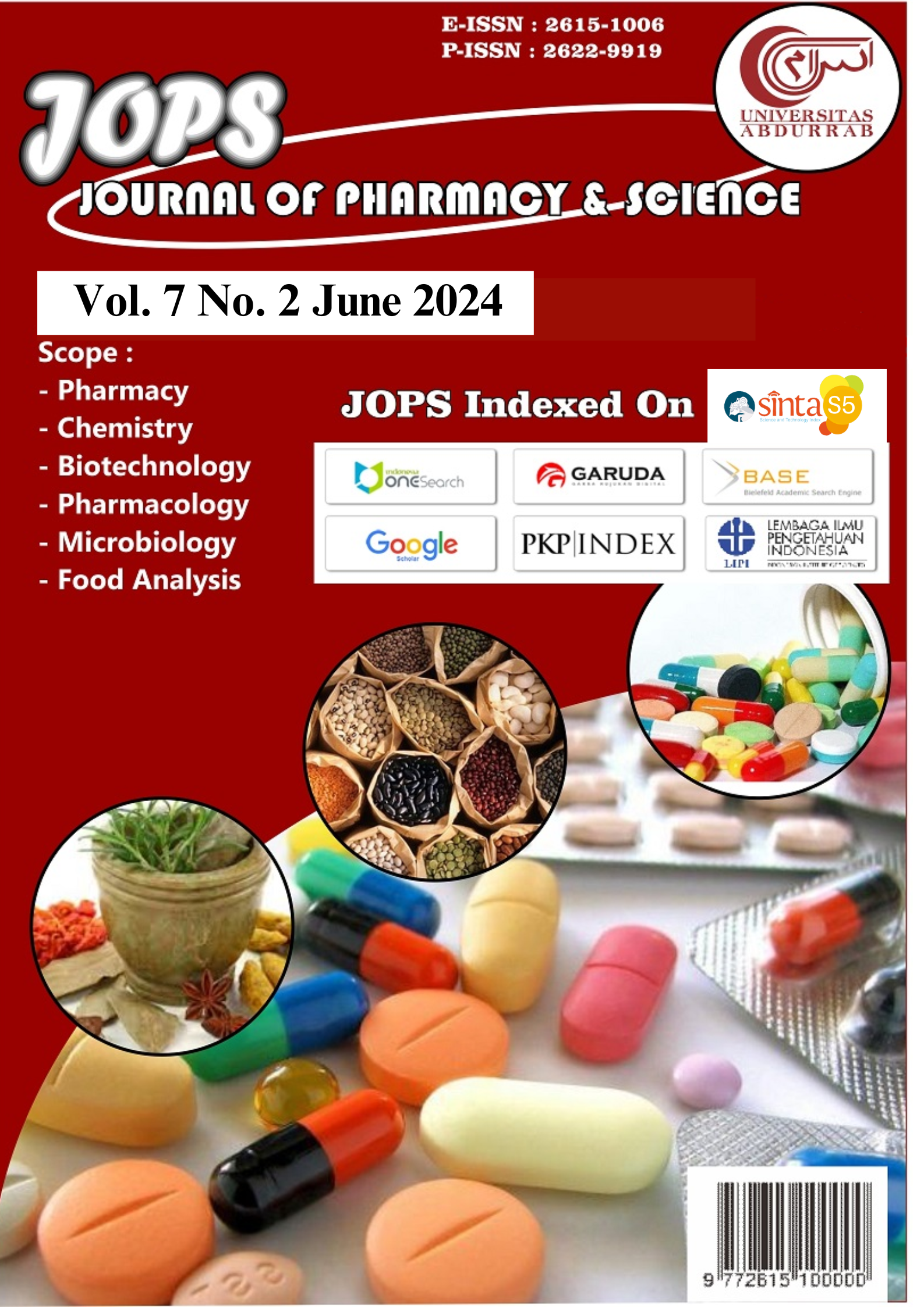The Effect of Ethanol Extract of Cherry Tomato (Solanum lycopersicum L.) on Mast Cell Degranulation in Male White Mice Invitro
DOI:
https://doi.org/10.36341/jops.v7i2.4678Keywords:
mast cell degranulation, type I hypersensitivity, immunomodulator, cherry tomatoes, Solanum lycopersicum LAbstract
Cherry tomatoes (Solanum lycopersicum L.) belong to the Solanaceae family which contains antioxidant compounds such as carotenoid compounds, which come from the terpenoid group, for example lycopene, besides cherry tomatoes also have flavonoid compounds. Both of these compounds have many pharmacological activities, one of which is as an anti-inflammatory. Inflammation starts from the process of mast cell degranulation, which is the process of releasing mast cell granules containing inflammatory mediators such as histamine, leukotriene and prostaglandins that cause type I hypersensitivity (allergies). This study aims to determine the effect of cherry tomato ethanol extract on mast cell degranulation of male white mice in vitro. The experimental animals used were male white mice that were actively sensitized after being induced with 20% ovalbumin antigen 0.2 mL/20 g BW on the first day intraperitoneally and the 7th day subcutaneously. The results of the average percentage of mast cell degranulation by cherry tomato extract at concentrations of 25 μg/ml; 50 μg/ml; 100 μg/ml and 200 μg/ml were 54.70%; 51.71%; 46.73%; 42.65% and 38.92%. This study shows that cherry tomato extract (Solanum lycopersicum L.) can inhibit mast cell degranulation in male white mice
Downloads
References
Abdel-Razzak, H., Ibrahim, A., Wahb-Allah, M., & Alsadon, A. 2013. Response of cherry tomato (Solanum lycopersicum var. cerasiforme) to pruning systems and irrigation rates under greenhouse conditions.
Aldi, Y., Husni, E., & Yesika, R. 2020. Activity of kincung flowers (Etlingera Elatior (Jack) RM Sm.) on total leukocytes and percentage of leukocytes in allergic male white mice. Pharmacognosy Journal, 12(1).
Anggraini, A., Sutanegara, S. W. D., & Saputra, K. A. D. 2019. Pengaruh cuci hidung dengan daun dewandaru (Eugenia uniflora L) terhadap infiltrasi sel inflamasi pada mukosa hidung tikus wistar yang menderita rinitis alergi. Intisari Sains Medis, 10(3).
Basu, A., & Imrhan, V. 2007. Tomatoes versus lycopene in oxidative stress and carcinogenesis: conclusions from clinical trials. European journal of clinical nutrition, 61(3), 295-303.
Huang, S. M., Lertora, J. J., & Atkinson Jr, A. J. (Eds.). 2012. Principles of clinical pharmacology. Academic Press.
Husni, E., Yesika, R., & Aldi, Y. 2020. The extract of kincung flower (Etlingera elatior (Jack) RM Sm.) activity to decrease IL-4 and IgE levels in Type I hypersensitivity white male mice. Pharmacognosy Journal, 12(4).
Kuncorojakti, S. 2014. Evaluasi Pewarnaan Toluidine Blue untuk Identifikasi Sel Mast Jaringan Ikat dari Preparat Blok Parafin Kulit Tipis Anjing Evaluation Toluidine Blue Staining to Identify Connective Tissue Mast Cells (CTMS) in Paraffin Block Thin Skin of Dog. Veterinaria, 7(2).
Marzocco, S., Singla, R. K., & Capasso, A. 2021. Multifaceted effects of lycopene: a boulevard to the multitarget-based treatment for cancer. Molecules, 26(17), 5333.
Mlcek, J., Jurikova, T., Skrovankova, S., & Sochor, J. 2016. Quercetin and its anti-allergic immune response. Molecules, 21(5), 623.
Setyorini, D. 2021. Terpenoids: Lycopene in tomatoes. Terpenes and Terpenoids-Recent Advances.
Yesika, R. 2023. Pengaruh Ekstrak Kulit Buah Naga Merah (Hylocereus Polyrhizuz) Dalam Menghambat Degranulasi Sel Mast Dan Mencit Putih Jantan Yang Tersensitisasi Aktif. Jurnal Ilmiah Ibnu Sina, 8(1), 145-154.
Weng, Z., Zhang, B., Asadi, S., Sismanopoulos, N., Butcher, A., Fu, X., ... & Theoharides, T. C. 2012. Quercetin is more effective than cromolyn in blocking human mast cell cytokine release and inhibits contact dermatitis and photosensitivity in humans. PloS one, 7(3), e33805.
Zhang, L., Ravipati, A. S., Koyyalamudi, S. R., Jeong, S. C., Reddy, N., Smith, P. T., ... & Wu, M. J. (2011). Antioxidant and anti-inflammatory activities of selected medicinal plants containing phenolic and flavonoid compounds. Journal of agricultural and food chemistry, 59(23), 12361-12367.
Downloads
Published
How to Cite
Issue
Section
License
1. Copyright of all journal manuscripts is held by the JOPS (Journal Of Pharmacy and Science)
2. Formal legal provisions to access digital articles of electronic journal are subject to the provision of the Creative Commons Attribution-ShareAlike license (CC BY-NC-SA), which means that JOPS (Journal Of Pharmacy and Science) is rightful to keep, transfer media/format, manage in the form of databases, maintain, and publish articles.
3. Published manuscripts both printed and electronic are open access for educational, research, and library purposes. Additiponally, the editorial board is not responsible for any violations of copyright law.
licensed under a Creative Commons Attribution-ShareAlike 4.0 International License.










